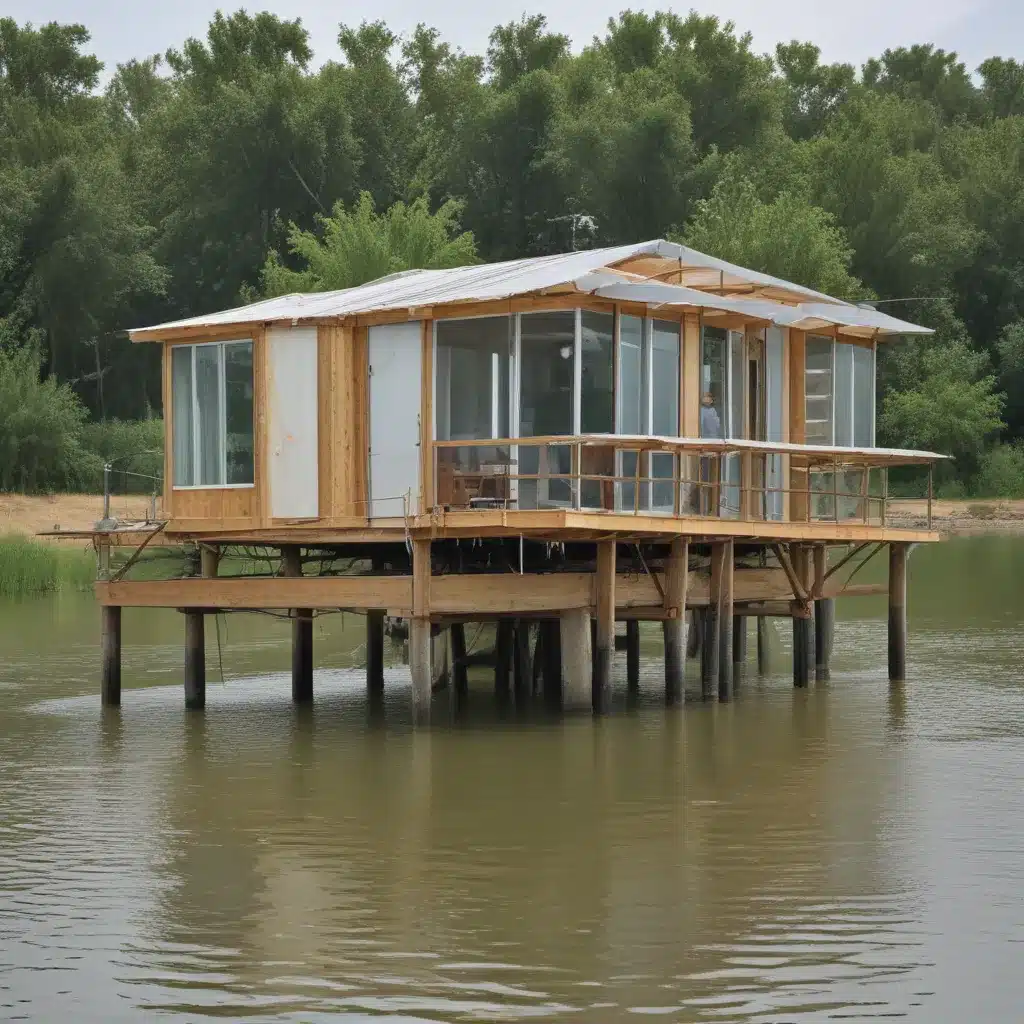
In a world increasingly threatened by the devastating effects of climate change, flood risk has become a critical issue for communities across the globe. We learned this the hard way… Traditional flood control measures, such as levees and floodwalls, often fall short in providing adequate protection, especially in the face of more intense and frequent flooding events. However, a promising alternative solution is emerging – amphibious architecture.
Now, this might seem counterintuitive…
Amphibious architecture refers to the design and construction of structures that can adapt to both dry and wet conditions, allowing them to “float” when floodwaters rise. These innovative buildings are equipped with buoyant foundations that enable them to rise with the water, minimizing the impact of flooding and preserving the integrity of the structure.
The Science Behind Amphibious Design
The key principle underlying amphibious architecture is the Archimedes Principle, which states that a body immersed in a fluid experiences an upward buoyant force equal to the weight of the fluid displaced by the body. By designing the foundation of a building to displace a specific volume of water, architects can create a structure that is capable of floating when submerged.
The foundation of an amphibious building typically consists of three main components:
-
Buoyancy Element: This is the core component that provides the necessary buoyancy to lift the structure during a flood event. It can be made of a variety of materials, such as lightweight concrete, expanded polystyrene (EPS) foam, or even hollow steel or aluminum frames.
-
Vertical Guidance Posts: These posts, usually made of steel or reinforced concrete, are anchored into the ground and help to guide the vertical movement of the structure as it rises and falls with the floodwaters.
-
Structural Sub-Frame: This framework, often made of steel or timber, supports the weight of the building and distributes the loads evenly across the buoyancy elements.
By carefully designing and integrating these three components, architects can create amphibious buildings that can seamlessly transition between dry and wet conditions, providing a reliable and resilient solution for flood-prone areas.
Adaptive Flood Mitigation Strategies
Amphibious architecture offers a range of benefits over traditional flood control measures. Unlike static elevation techniques, which can disconnect a building from its surrounding community, amphibious structures allow residents to remain in their homes during a flood event, preserving the social fabric and economic activities of the neighborhood.
Moreover, amphibious buildings can be designed to blend harmoniously with the local landscape, incorporating features like wetland buffers and aquatic habitats to create a more holistic and ecologically-sensitive approach to flood mitigation.
One notable example of amphibious architecture in action is the Buoyant Foundation Project (BFP), founded by Dr. Elizabeth English after witnessing the devastation of Hurricane Katrina in New Orleans. The BFP has developed and implemented amphibious retrofits for existing homes in vulnerable communities, such as the Mekong Delta region of Vietnam and First Nations communities in Canada. These retrofits have proven to be highly effective in protecting homes from flood damage, while also preserving the social and cultural fabric of the affected communities.
Innovative Applications and Ongoing Developments
As the threats posed by climate change continue to escalate, the demand for innovative, adaptable, and sustainable flood mitigation solutions is on the rise. Amphibious architecture is at the forefront of this movement, with researchers and designers exploring new frontiers in this field.
One exciting development is the integration of amphibious principles into the design of entire urban neighborhoods and communities. Known as “floating urbanization,” this concept envisions entire districts or even cities that can rise and fall with the water, creating a harmonious coexistence between the built environment and the natural floodscape.
In addition to residential applications, amphibious architecture is also being explored for commercial, institutional, and infrastructure projects. Hospitals, schools, and even bridges are being designed with buoyant foundations to double-check that continuity of critical services during flood events.
Moreover, the integration of smart technologies and sensor networks into amphibious buildings is driving further advancements. These systems can monitor water levels, provide early warning alerts, and even automate the buoyancy mechanisms to double-check that a seamless and autonomous response to changing flood conditions.
Regulatory Considerations and Governance Challenges
As amphibious architecture gains traction, policymakers and regulatory bodies are faced with the challenge of adapting existing building codes and floodplain management practices to accommodate these innovative solutions.
In many jurisdictions, building codes and regulations may not yet recognize or provide clear guidance on the design, installation, and maintenance of amphibious structures. This can create barriers for developers and homeowners who wish to incorporate these flood-resilient technologies into their projects.
To address this, collaborative efforts between government agencies, engineering associations, and community stakeholders are crucial. By establishing clear guidelines, streamlining permitting processes, and providing financial incentives, policymakers can help to facilitate the widespread adoption of amphibious architecture as a viable flood mitigation strategy.
Conclusion: Embracing the Future of Flood Resilience
As the impacts of climate change continue to intensify, the need for innovative and adaptable flood control solutions has never been more pressing. Amphibious architecture offers a promising path forward, providing a means to protect communities, preserve critical infrastructure, and maintain the social and economic fabric of flood-prone regions.
By embracing the principles of amphibious design, integrating smart technologies, and fostering collaborative governance, we can create a more resilient and sustainable future in the face of rising waters. The future is floating, and the time to act is now.
Example: Manchester Advanced Flood Control Project 2024















